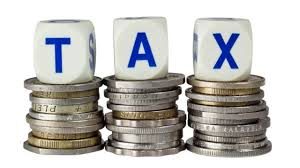 Author: Craig Miller from Webber Wentzel.
Author: Craig Miller from Webber Wentzel.
Tax practitioners are often asked to calculate the indicative effects of the prospective sale of a business (assuming no roll-over relief applies) for the seller.
Invariably, the tax practitioner will be informed by the private equity or corporate finance practitioner that enterprise value (EV) is the estimated fair value of the operations of the business. However, this may give rise to a misunderstanding. A tax practitioner is likely to be confused by reference to the “business” (a term only appearing three times in the Income Tax Act) and will not always understand how this value is calculated.
There may also be an “equity value” calculation, where interest-bearing debt is deducted from the “enterprise value”. At a basic level, the formula to arrive at equity value is shown below:
EV minus Debt (interest-bearing) plus cash = Equity Value
Upon seeing the reference to “equity value”, a tax practitioner may be quick to conclude that EV relates to the value of the gross assets which are the subject of the impending transfer. This is because a “business” is, strictly speaking, not an asset for income tax and capital gains tax purposes. Rather, for purposes of determining the tax consequences, each asset which is subject to the sale needs to be identified and then a portion of the purchase price which is payable by the purchaser to the seller must be allocated to that asset.
However, even if the parties allocate a purchase price between different assets, SARS may still apply a different application, if the allocation does not represent the actual facts and true intention of the parties. The allocation needs to be reasonable, within the context of the commercial considerations.
If the “business” is defined in the sale of business agreement as the transfer of “sale assets” and “sale liabilities” in exchange for a cash consideration of, say, ZAR80, it is incorrect simply to use ZAR80 as the basis for determining the sellers tax liability arising from the transaction. The purchaser has both assumed the liabilities of the business and paid ZAR80 in cash.
Instead, the seller needs to determine the fair value of the liabilities assumed by the purchaser and the cash consideration (both of which will constitute an “amount” for income tax purposes) in determining the gross value of consideration received, and then refer to the sale agreement to determine how this value should be allocated between the different assets. If the seller has not taken “sale liabilities” into account for this purpose, the potential tax liability may have been materially underestimated.
EV is often derived from the popular discounted cashflow (DCF) basis of valuation. A DCF valuation begins by calculating future cashflows, taking into account forecast capital expenditures and movements in the working capital of the firm in future years, which amounts are discounted back by the weighted average cost of capital or any other risk-adjusted discount rate in ultimately calculating a net present value of these amounts.
EV is a popular basis for valuation as it reduces any potential distortion arising from different capital structures and different firms accounting policies. However, it is important to note that “payables” (which may comprise various current liabilities forming part of the working capital cycle) have already been taken into account in determining EV. To determine only the indicative gross asset value to the seller of the assets, the current market value of these “payables” should be added to EV.
To elaborate further, in theory a purchaser would be prepared to pay cash to the seller equal to the EV to acquire the seller’s business where the “business” comprises all the assets and the “payables”. When the “business” includes other liabilities, the purchaser should pay less in cash to the seller, given that the purchaser is assuming a greater value of liabilities, although the gross value of the assets remains the same.
This total value should then be split between the different asset categories in calculating the indicative tax liability, after deducting the estimated tax values or base costs of assets. Other events may occur between the time that the tax practitioner calculated the indicative tax liability for the seller and when the actual liability is calculated following the successful transfer of the business. However, if the “payables” were not added to EV in determining the gross consideration to be received by the seller for the impending sale of assets, the indicative calculation will be incorrect. The seller may be left scratching his head, trying to understand why the estimated tax liability was materially lower than the actual liability.
A basic formula, shown below, would help a tax practitioner to determine the gross asset value of assets subject to a typical sale of business:
Gross asset value = Equity Value plus Debt (Interest bearing) plus Payables (plus any other liability assumed by the purchaser as part of the purchase consideration)
